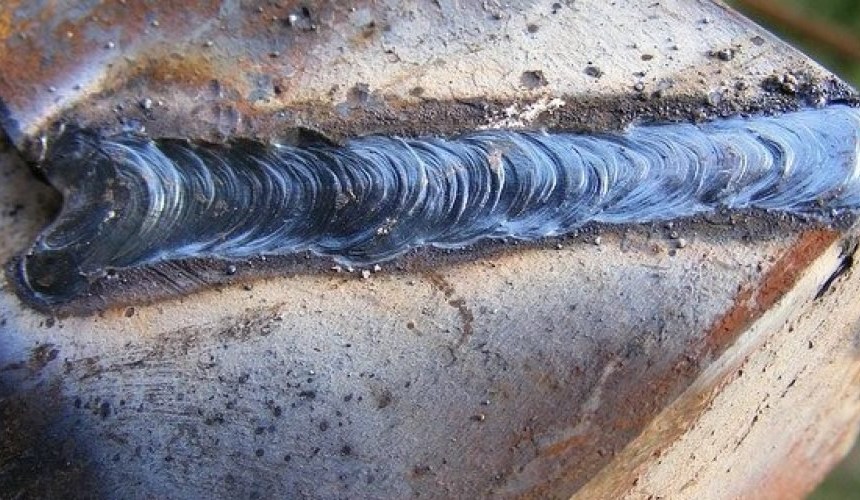Complete Guide to Preventing Weld Undercut: Tips and Techniques
Complete Guide to Preventing Weld Undercut: Tips and Techniques
Blog Article
A Comprehensive Overview to Identifying, Preventing, and Dealing With Undercut Welding Problems in Your Welding Jobs
In the realm of welding, encountering undercut issues is an usual obstacle that can jeopardize the structural integrity and total high quality of your welding jobs. Understanding the origin triggers behind undercut welding, being able to properly identify it in your welds, and executing effective preventative actions are critical skills for any welder. Furthermore, having the understanding and methods to rectify undercut troubles when they do happen can make a considerable distinction in the final end result of your welding ventures. Stay tuned as we discover the vital components of determining, preventing, and dealing with undercut welding problems, giving you with important understandings and techniques to boost your welding skills to the following level.
Usual Root Causes Of Undercut Welding
Undercut welding, an usual concern in welding procedures, can be triggered by different aspects that require to be very carefully recognized and dealt with to guarantee the integrity of the weld joint. One of the primary causes of undercut welding is excessive warmth input.
An additional usual root cause of undercut welding is incorrect welding method. Insufficient control of the welding torch or gun, wrong angle or range between the torch and the work surface, or inconsistent traveling rate can all contribute to the development of undercut. In addition, utilizing the wrong welding consumables or electrode dimension for a certain joint setup can result in undercut issues. Recognizing these origin and implementing corrective actions is crucial in protecting against and fixing undercut welding issues in welding projects.
Identifying Undercut in Welds

To identify undercut accurately, proper lighting and magnification devices are vital to inspect the weld joint thoroughly. Using devices such as a welding scale or a magnifying glass can aid in finding also the tiniest undercut flaws. Furthermore, running a finger or a fingernail along the weld joint can sometimes reveal undercut, as the surface area might feel uneven or have a dip where the undercut exists.
Safety Nets for Undercut
Having a deep understanding of the reasons of undercut in welds allows for the application of effective precautionary measures to preserve weld quality and stability. These setups ought to be maximized to avoid too much heat input, which can lead to damage development.

Methods for Dealing With Undercut

To deal with undercut issues properly, welders can utilize specific methods focused on fixing the problem and restoring the honesty of the weld joint. One method is to adjust the welding specifications, such as the voltage, current, and take a trip speed, to make certain proper warmth input and combination. Raising the welding present or reducing the traveling speed can assist load in the undercut. Furthermore, transforming the welding method from a press to a drag or vice versa can likewise aid lessen undercut.
Another method is to use a weaving movement while welding to ensure appropriate sidewall blend and fill in the undercut. By oscillating the welding arc from side to side within the weld joint, the welder see this site can transfer more filler material into the undercut locations, effectively eliminating the defect.
Additionally, grinding out the undercut and rewelding the joint can be a practical solution for much more serious undercut problems - Preventing weld undercut. This process involves removing the undercut section, preparing the base steel, and afterwards rewelding the joint with correct welding specifications and strategies to prevent undercut from persisting

Professional Tips for Preventing Undercut
Utilizing appropriate welding strategies and maintaining control over essential welding criteria are crucial methods for welders intending to prevent undercut in their weld joints. Additionally, choosing the proper welding procedure and read the full info here filler metal for the particular application can assist stop undercut. Keeping a regular travel speed during the welding process is one more necessary pointer to prevent undercut.
Conclusion
In final thought, recognizing, preventing, and fixing undercut welding problems in your welding projects is important for making sure solid and sturdy welds. Preventing weld undercut. By understanding the common reasons for undercut, being able to identify it in welds, executing precautionary procedures, and making use of correct strategies for dealing with undercut, you can stay clear of possible concerns and develop high-grade welds. Adhering to specialist ideas for staying clear of undercut can aid you boost your welding abilities and create much better lead to your tasks
Undercut welding, an usual problem in welding processes, can be created by numerous aspects that need to be carefully recognized and dealt with to guarantee the integrity of the weld joint. In addition, running a finger or a finger nail along the weld joint can in some cases reveal undercut, as the surface area might feel irregular or have a dip where the undercut exists.
Using proper welding strategies and preserving article source control over key welding criteria are essential approaches for welders intending to avoid undercut in their weld joints.In conclusion, determining, avoiding, and dealing with undercut welding issues in your welding projects is vital for guaranteeing durable and solid welds. By understanding the typical reasons of undercut, being able to determine it in welds, implementing precautionary measures, and using proper methods for fixing undercut, you can prevent potential problems and develop premium welds.
Report this page